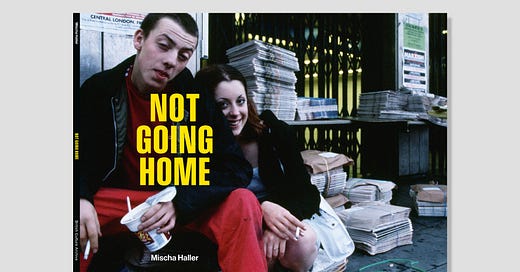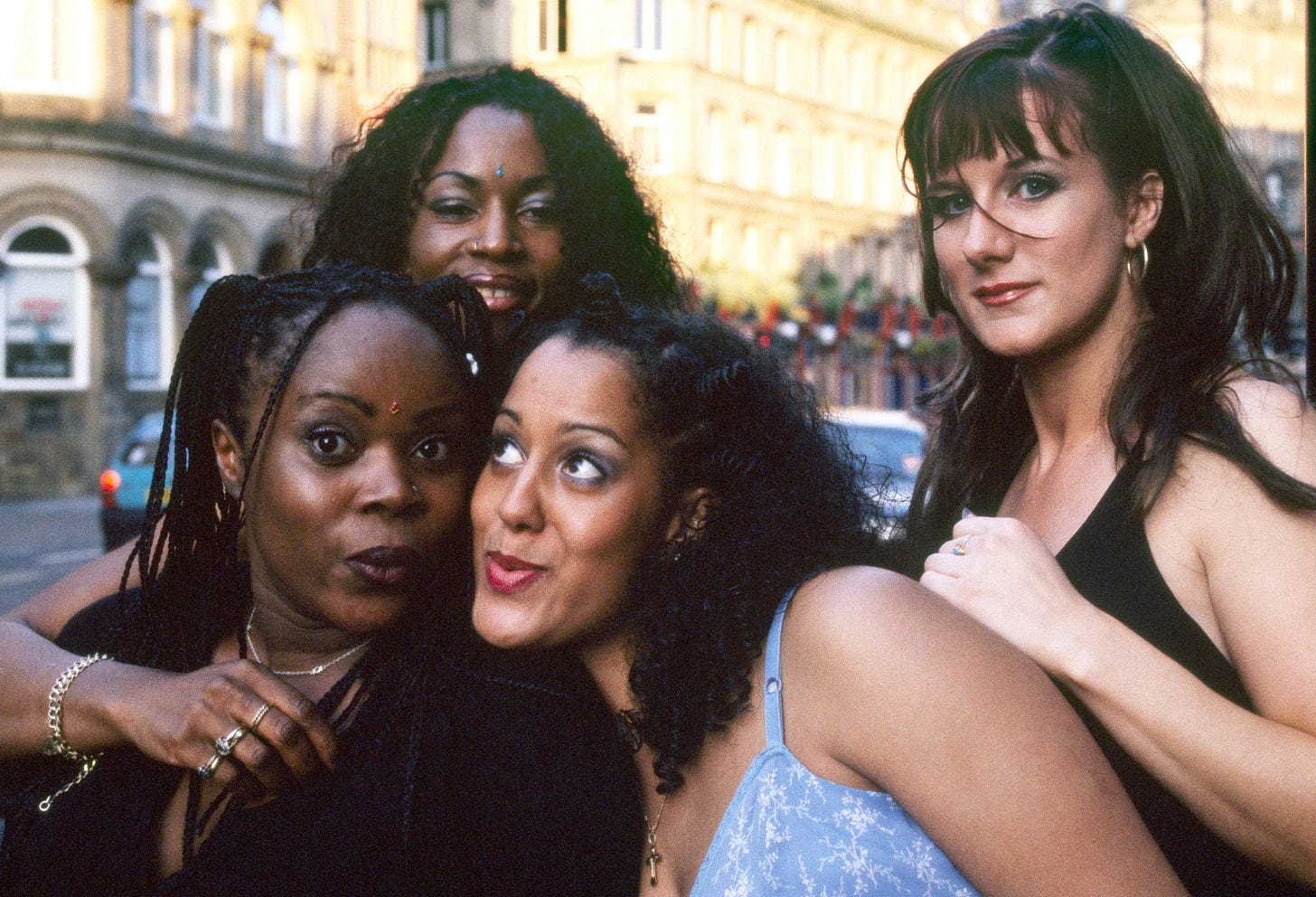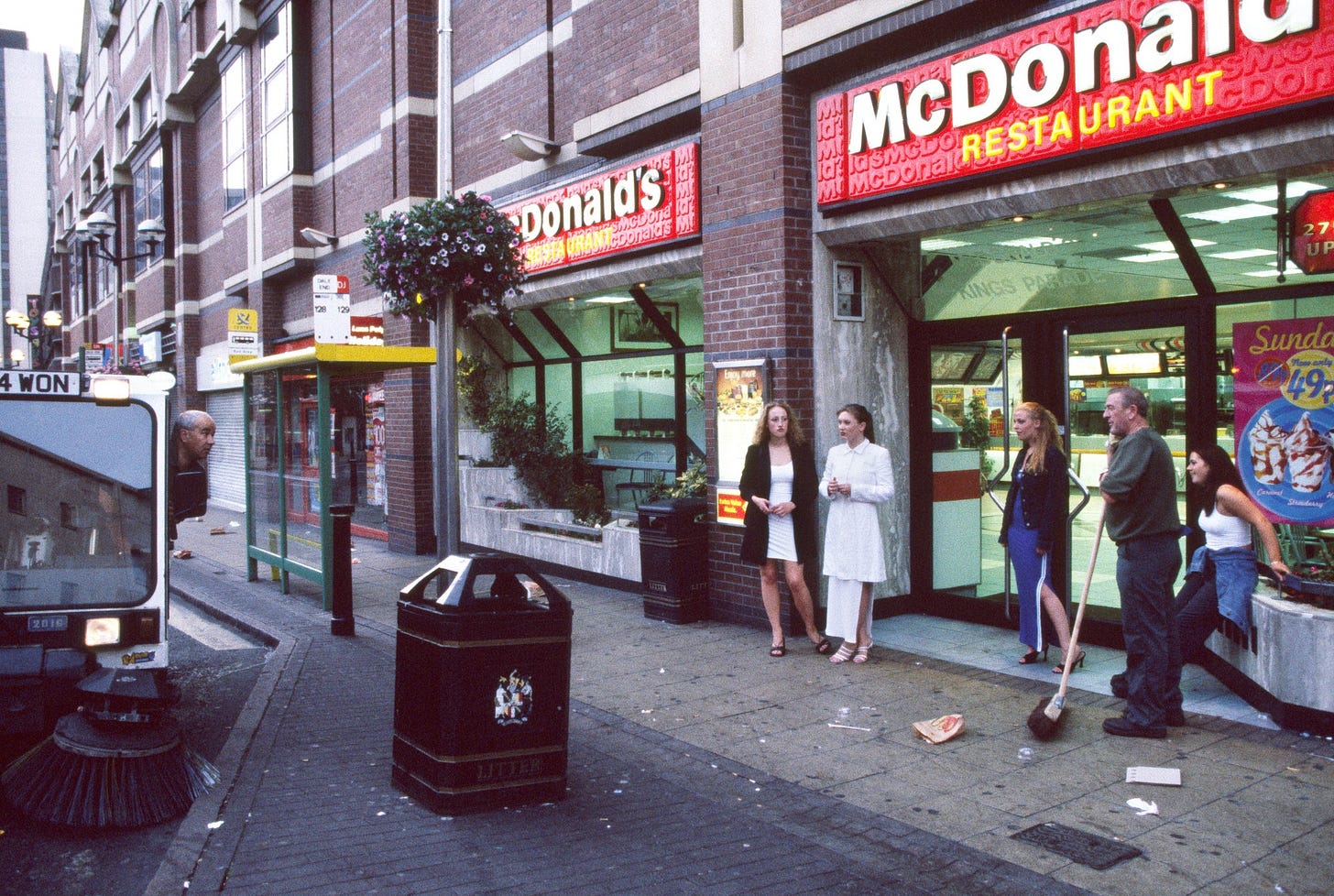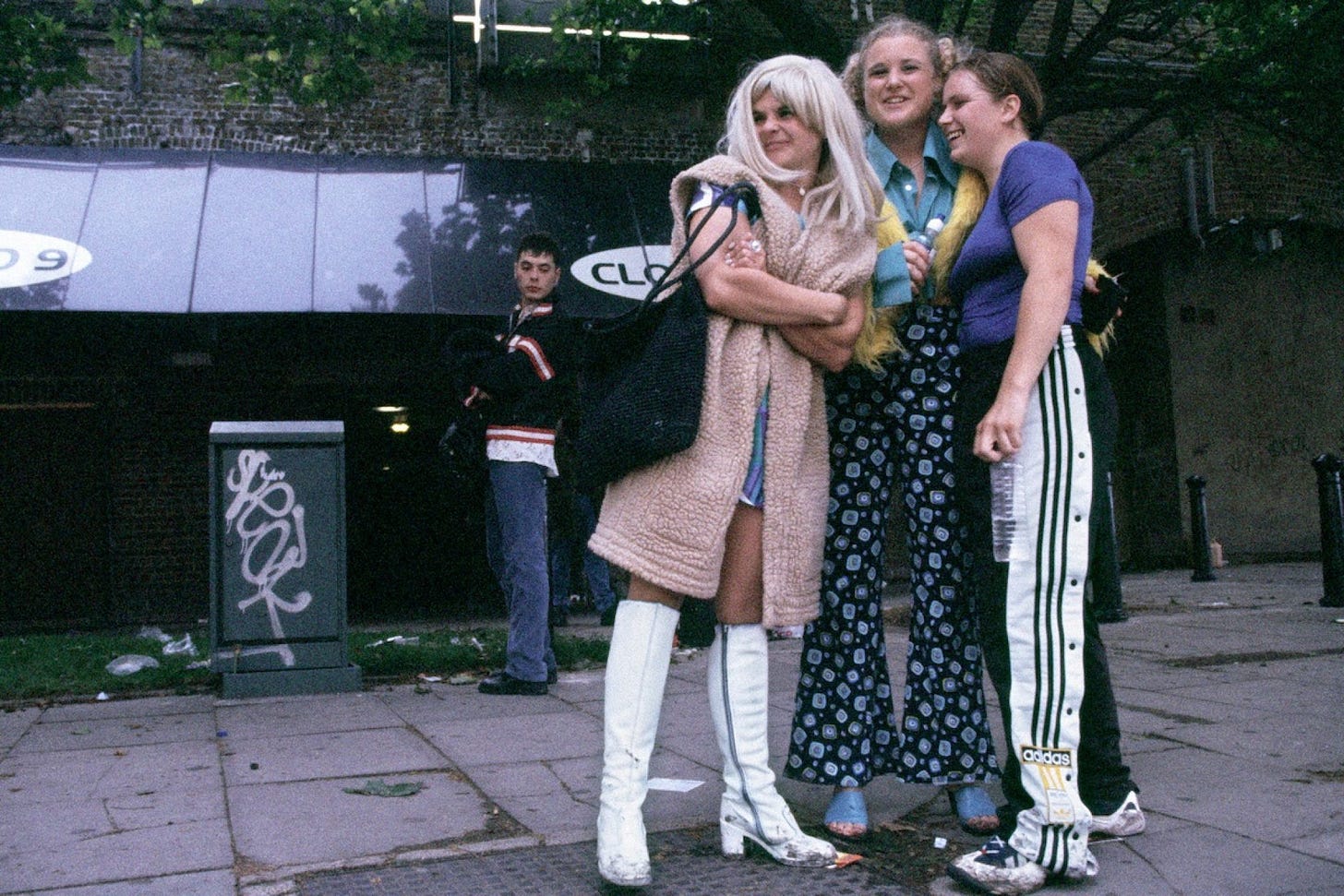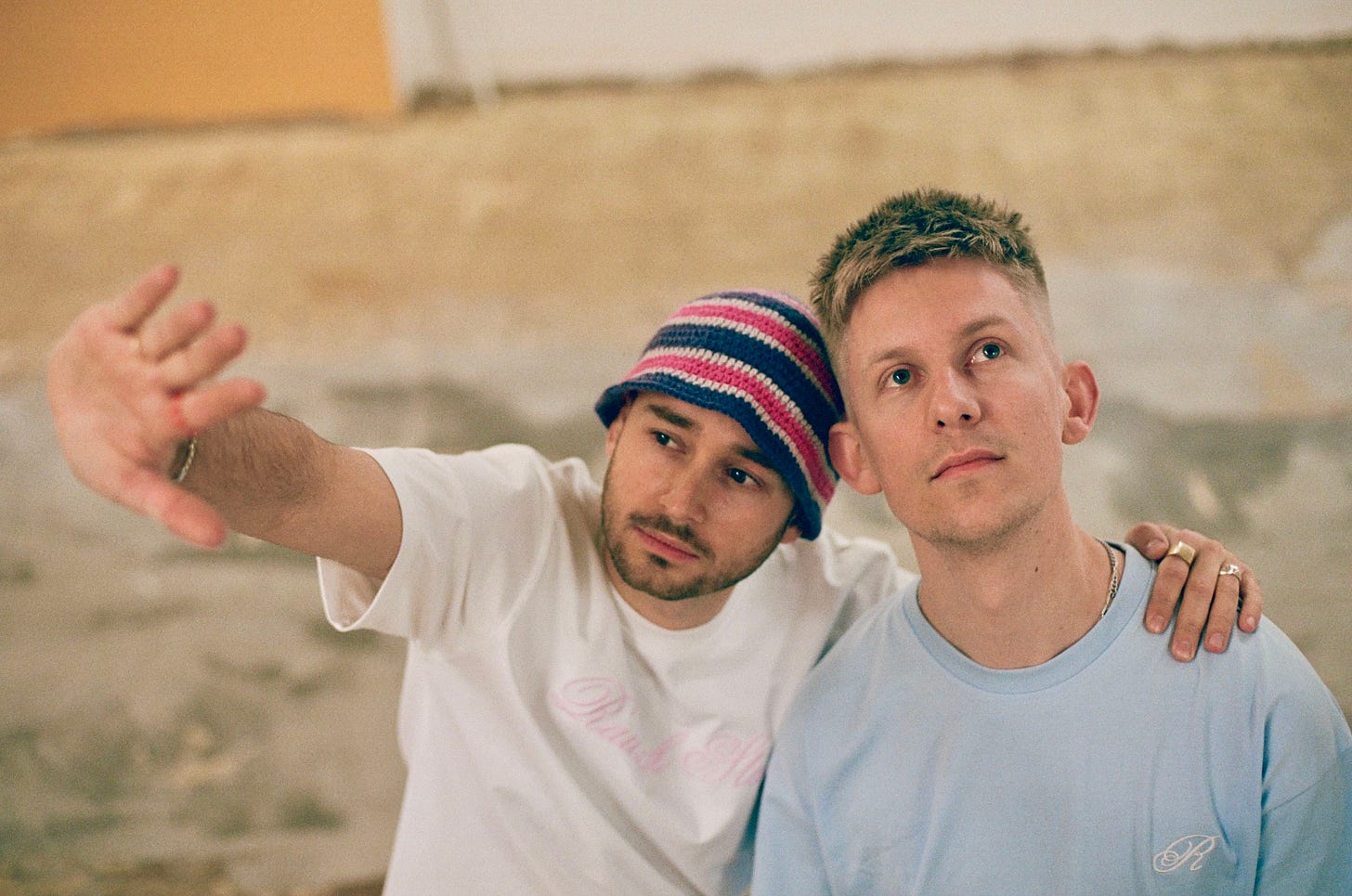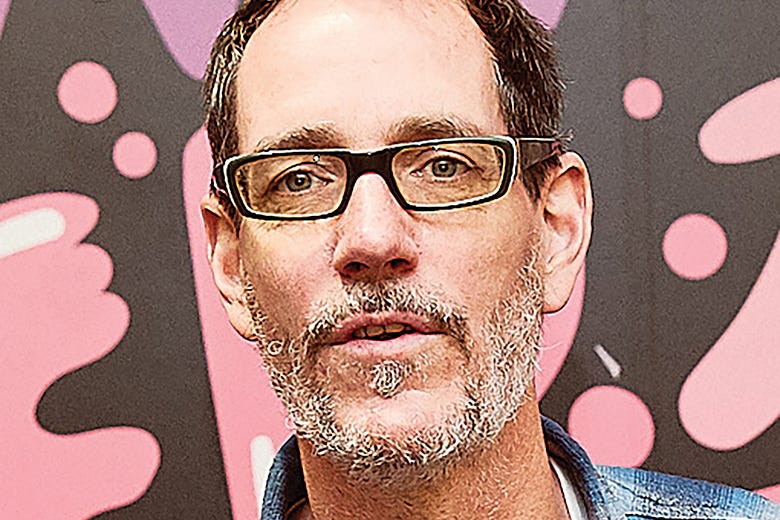Here’s a bunch of extras for you to delve into. Whenever I’m on social media, I will always make a note of interesting projects, news or music I’d like to share in my newsletter. It makes my job a lot easier when I have a stack of stuff to share, and it gives me the opportunity to make new connections and explore the projects that fascinate me.
On my digital scrolling adventures not long ago, Mischa Haller’s Not Going Home really struck me. I’ve been following the British Culture Archive for a long time now and I always enjoy what they curate and share on their page. Not Going Home was an instant purchase. Soon after I bought it, I reached out to Mischa for an interview, which he kindly agreed to.
You’ll also find an entire archive of Muzik Magazine, a comprehensive Spotify playlist featuring music from every single one of the legendary Street Sounds Electro compilations, a shout to the new DJ HEARTSTRING release (stunner!) and, very sad to say, a big RIP section.
Mischa Haller On His Photo Book Not Going Home
I've really enjoyed your book. You don't often see photos of that kind which makes it a unique little project. I'm assuming that you were going out and clubbing yourself around the era that these pictures were taken. Is that correct?
Well, I started clubbing and working as a photographer in clubs in the early nineties in Switzerland. While I was at uni, I got a job working with a professional photographer. One day I just realised that this is my career, and this is what I want to do. So I dropped out of uni and started taking photos full time and working as a photographer's assistant. At weekends, I would go to clubs and take photos for magazines in Switzerland, and during the week, I was working as an assistant. After two years in Switzerland, I decided to move to Paris to work as a fashion photographer's assistant there. I continued going to clubs and taking photos. So I was clubbing a lot until like 98 or so, when I started slowing down and concentrating more on doing documentary photography. But I would say I'd definitely been clubbing for eight to 10 years before the Not Going Home photos were taken.
What music were you focused on during that time?
I really liked house music a lot, so I used to work with a journalist in Switzerland called Arnold Meyer. They call him the Pope of Techno in Switzerland. We used to do stories together. For example, one summer we went to Rimini and did a story about all the clubs there and the DJs. We were very much into Italian house, but also New York house. In the western part of Switzerland, there were always a lot of DJs from New York playing - like Lil Louis Vega.
So you have a lot of experience in and around the club world.
Exactly, it just came natural to me. I loved the music, I loved the people, the dressing up, the parties, everything. It was just so much fun. We had a blast in our twenties, I have to say.
Tell me about your experiences in the UK, because some of the photos are not just in London are they?
I went all around the UK, yes. I started the project in London. I did a kind of test run. The magazine that was interested in the original idea was Minx, and we were discussing if we should do it or not. I said, “Why don't I do a test run in London?” So I went around Brixton and the shoot went really well. I was like, “This is really working”, and so Minx agreed to pay for my expenses to travel all around the UK and do the story for them.
How did you decide where to go?
We discussed it. “Where are the cities where there’s likely to be good opportunities? We were thinking, you must have students or a young population. So, places with universities where people go out clubbing. Then it was also a case of spreading out around the country, so we didn't just stay in the south east. We wanted to go up north and do Scotland. And then in the end, we also decided to go to Wales.
In each of these locations, how did you find people who were not wanting to go home?
You just loiter around in front of a club at 5am!.. and then ask people. I had a list of the main clubs in each city, and then I would go there at like, 4 or 5am and wait. Then people came out and I would ask them if they would mind if I follow them around for half an hour and take some photos. I always told them, “Don't pay any attention to me. Just do whatever you do.”
How successful were you with that kind of proposition?
Most people feel flattered when they're photographed by a professional photographer, they don't mind. It doesn't happen to you every day, does it?.
That's true. There's this guy on Instagram that has an account called Model Strangers. People always seem so flattered when he approaches them and says, “I want to take a picture of you” and he always gets really amazing, beautiful stories out of them. On that note, did you spend a lot of time speaking with the people that you photographed and hearing their experiences, or was it more along the lines of detaching yourself and observing?
I tried to not get involved and really just observe. It also depends how long you hang out with them. If I would follow somebody around for a week, of course, you will get to know them, but if you just follow them for half an hour or an hour, then it's kind of different. You have maybe a bit of a chat and ask what they’re doing or where they've been but it's more of a brief encounter. One of the girls from Birmingham, for example, who I shot in front of McDonald's, she messaged me in April when she saw the story on Instagram and said, “Oh my God, that's me and my friend in the photo”. She said that they actually enjoyed being photographed and they were talking about it for a while afterwards.
How long ago was this now?
It was 1998, 27 years. So I shot it in the summer of 98 and then it was published in March 99.
From your point of view, especially looking back from today at that particular period, what do you think the photos say or represent about life for young people in that era?
Well, I think people still do this. When I talked to my daughter, who is now 18, about it, she said, “This could be me and my friends”. So it's still happening, definitely, but I think it just looks different. Everybody has a phone now, people photograph themselves. If I would photograph it, it would be digital, not film anymore. So there's a certain vibe about it as well, because it was photographed on slides. It just feels a bit softer and maybe a bit more dreamy, or, I don't know what it is, but it just gives it a certain nostalgia.
Yeah, there's definitely strong nostalgia and there’s also a kind of naivety about the world itself.
Yes, yes, totally.
As soon as I saw it posted on the British Culture Archive, I was like, “Right, I want that book now!”.
It's been an amazing success. I just blown away by that. I thought, you know, if we sell our books in a year or so, that would be an amazing achievement. Then they went out in three days. I was like, “What's going on?!”.
Well, it's a very reasonable price and I think, because of the way the world is at the moment, nostalgia is very present in a lot of people's lives.
We're living in a very insecure time and I think people look for something to hold on to, and also trying to figure out… we are actually at a crossroads, because we need to figure out, “Where are we going as a human race? Where do we want to head? Do we really want to head down this AI digital hole? Or is something else possible? Or can we do both?” Because this analogue world that we live in as human beings, we need it. We love it. That's what we want. But then we are told that we need to go the AI tech hole way…
Yeah, I totally hear you. My last question is, at that particular time in your life, what did that project bring to you? Personally and professionally, what did it do for you? What did you learn?
It's definitely something that I loved doing, and once I'd shot the story, I knew I had something special. I was thinking about this, and talking to my wife about this, because, at the time, it didn't have a big impact. I think we just all thought it was normal, we didn't think about the wider implications of what we were doing and how we were living. But I am always interested in photographing and documenting how we live and what we do, because it is peculiar and it is unique to each of the decades we live in. Then afterwards, you realise the differences and the intricacies between the decades. I think it's really good to just go out and take photos, because you never know, sooner or later, you'll hit gold. And I did hit gold with this story. I really did.
Muzik Magazine Is Online
This may be old news to some of you, but I recently stumbled across the online archive of Muzik Magazine. I have to admit, I wasn’t a reader of Muzik back in the day. I didn’t buy any electronic music magazines at all during my adolescence. However, I am very aware of what an influential, essential part of music culture it was back in the nineties.
Every issue, from all eight years of its lifespan, is available to download as a PDF, and I’ve really enjoyed having a scan through the old mags. The design, the content, the interviews, features and reviews - classic material.
I know it’s not easy to find time these days, but this is definitely worth carving out a few hours for.
Street Sounds Electro
If you know anything about the roots of dance music and rave culture in the UK, then you’ll be aware that the Street Sounds Electro series was a key influence for many artists. It was a pioneering compilation series for many reasons. Not only for its widespread cultural influence but it’s also said to be the first compilation to present tracks/songs in their full-length version. Street Sounds Electro introduced many people across the world to the emergent electronic sounds coming out of the US, and it was undoubtedly one of the catalysts behind the first wave of what became rave culture. Martin Allen has kindly put together this playlist featuring the music from every Street Sounds Electro release from 1 all the way to 22.
DJ HEARTSTRING - You Are The Sun, I Am The Sky
Big shout to DJ HEARTSTRING, recent Mixmag cover stars. I’ve followed their progress and it’s been great to see them rise and rise over the last few years especially. This new release is absolute fire. Released a few weeks ago on Valentine’s Day, the EP goes straight for the heart (hehe!), while also pumping your body full of high-energy vibrations. I’ve been playing these tunes A LOT at home!
So Much Loss Recently…
It’s been a very sad time across the music business over the past month or so. A lot of legends have left us. Each one has left an indelible mark on the musical landscape, and will be forever remembered for their contributions, their love, their passion and their soul.
Rest In Peace to:
!K7 Music founder and CEO Horst Weidenmüller
Playin' 4 The City - AKA Olivier Portal
David Lynch
Gwen McCrae
Angie Stone
Roy Ayers
Roberta Flack
DJ Funk
I also wanted to give a special mention to Caspar Melville, who died recently too. I connected with Caspar on Twitter several years ago, we had a few nice exchanges and found there was some alignment in our respective outlooks. In 2021, I asked him to contribute to a huge research project I was doing for Sony Music. During our chat he asked if I’d be up for taking part in a guest lecture for his class at SOAS, where he was Senior Lecturer in Global Creative & Cultural Industries. We did the conversation on 25th March 2021, and it went really well. Through his questions I had a mini epiphany, so I’m very grateful for the opportunity he gave me. Listen to/watch the lecture below…
Caspar’s outlook was very much in line with creating positive change and exploring the influence of Black communities on the musical landscape. His PhD was on the history of inter-racial dance music scenes in London, which led to his book It’s A London Thing. He was also editor at The New Humanist, lectured at both SOAS and Goldsmith’s (where he got his PhD) and he opened doors for a lot of young Black people - encouraging them, supporting them and bringing them in to the educational establishment.
As Elijah said to me, “He was trying to change tings”.
Rest In Peace, Caspar.

